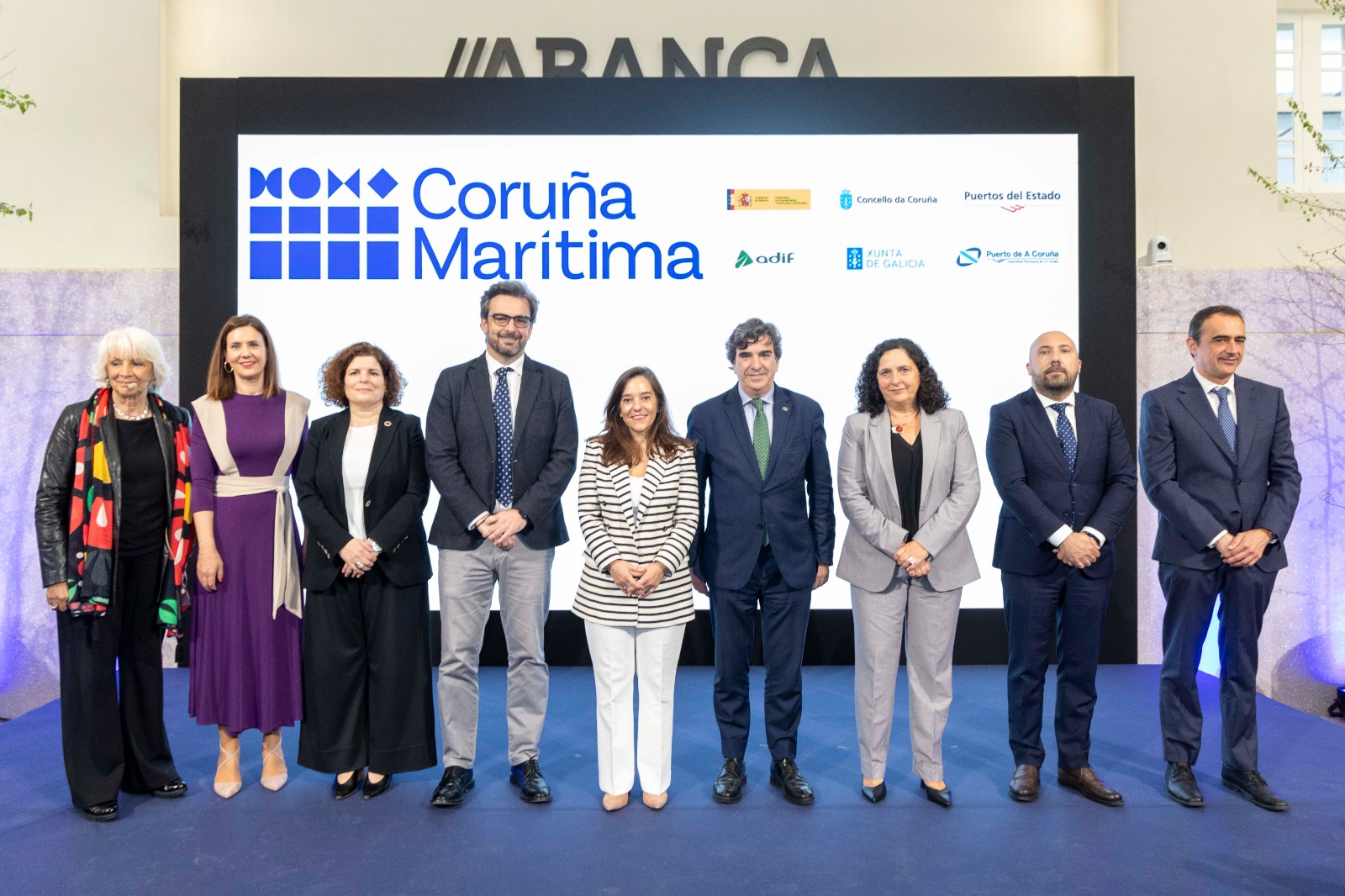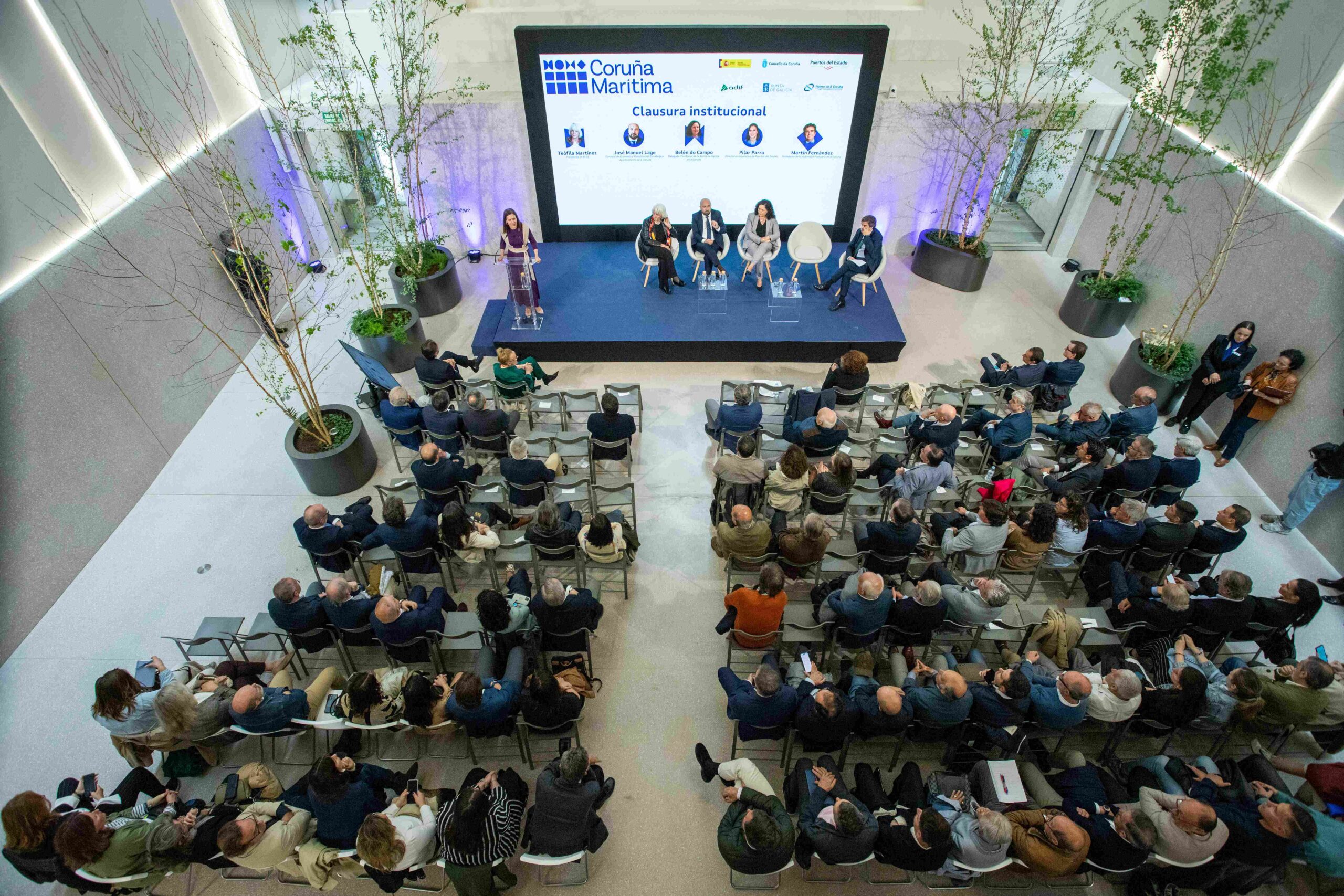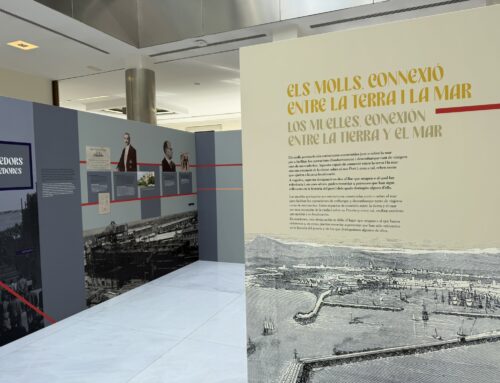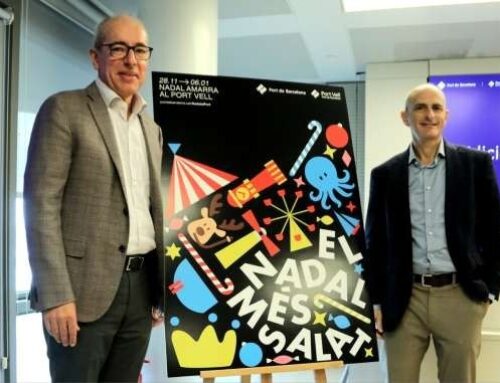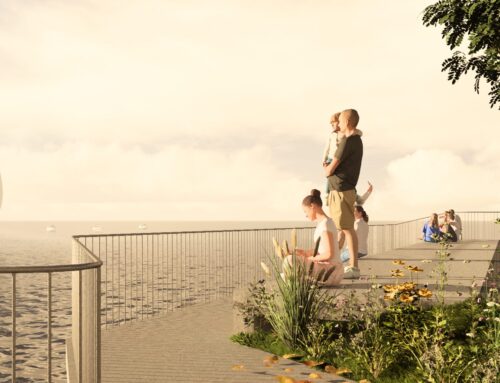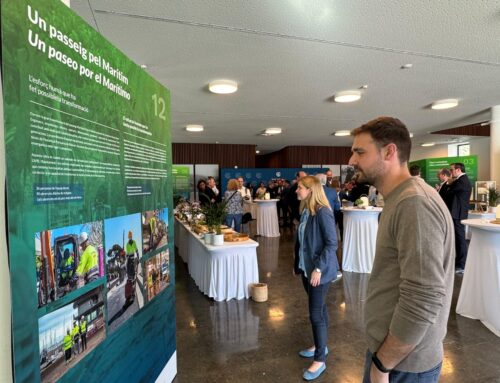The Coruña Marítima project took another step forward this morning with the public presentation of the main conclusions from the participatory process, launched to gather contributions from society for the transformation of the inner port areas.
The event, held at the Avenida space and attended by a large audience, began with an institutional opening featuring the Mayor of A Coruña, Inés Rey; the Regional Minister for the Presidency, Justice and Sports, Diego Calvo; the Government Delegate in A Coruña, María Rivas; and the President of the Port Authority of A Coruña, Martín Fernández Prado. In their speeches, they emphasized the significant opportunity that the integration of the urban docks represents for the city, as well as the importance of cooperation among public administrations as a key element for the project’s success. They also expressed their appreciation for the citizens of A Coruña, whose innovative and valuable contributions will be incorporated into the planning and development of Coruña Marítima.
Next, the Director of the Port Authority of A Coruña, Juan Diego Pérez Freire, presented the results of the participatory process. He recalled that the project’s Strategic Foundations were sent to over a thousand local entities, that a dedicated website with a suggestion box was created, along with official social media accounts, and that five thematic workshops were held. These workshops were open to dialogue with the public and brought together over eighty experts and numerous attendees who offered feedback and suggestions on the Strategic Foundations.
Among the results, it stands out that nearly 38,000 people actively viewed the project’s information, and more than 150 individuals submitted input, resulting in almost 700 distinct suggestions.
As key conclusions, Pérez Freire pointed out that the vast majority of contributions focused on improving urban mobility and connections with the metropolitan area, promoting cycling and pedestrian mobility, creating green zones and corridors, boosting new economic and innovation activities, and reinforcing port-related activities—especially fishing.
As a result of this process, he indicated that these suggestions will be incorporated into the Strategic Foundations of the project and have helped enhance and reshape the Strategic Agreements approved by the Coruña Marítima commission. Two new agreements have even been added, focusing on green infrastructure and the economy, bringing the total to 14 Strategic Agreements, structured into five blocks: port area, mobility, civic realm, environmental realm, and economic realm. Nonetheless, he highlighted that both specialists and social groups, as well as individual citizens, endorsed more than 95% of the content in the existing Foundations and Agreements, considering them well-suited to the needs of the port and the city. The new Strategic Foundations and Agreements, along with a summary of the participatory process, will be available from today on the website www.corunamaritima.com. Additionally, in the coming days, the contributions submitted by organizations and citizens through the suggestion box will also be published on the website.
Following the intervention by the Director of the Port Authority of A Coruña, the Coruña Marítima Forum continued with contributions from Teófila Martínez, President of the Port Authority of Cádiz and of RETE (the Association for Collaboration between Ports and Cities), and David Pino, Director of Port Vell in Barcelona, who joined via videoconference. Both shared valuable insights on various port transformation models and congratulated the institutions and citizens of A Coruña for the Coruña Marítima project.

